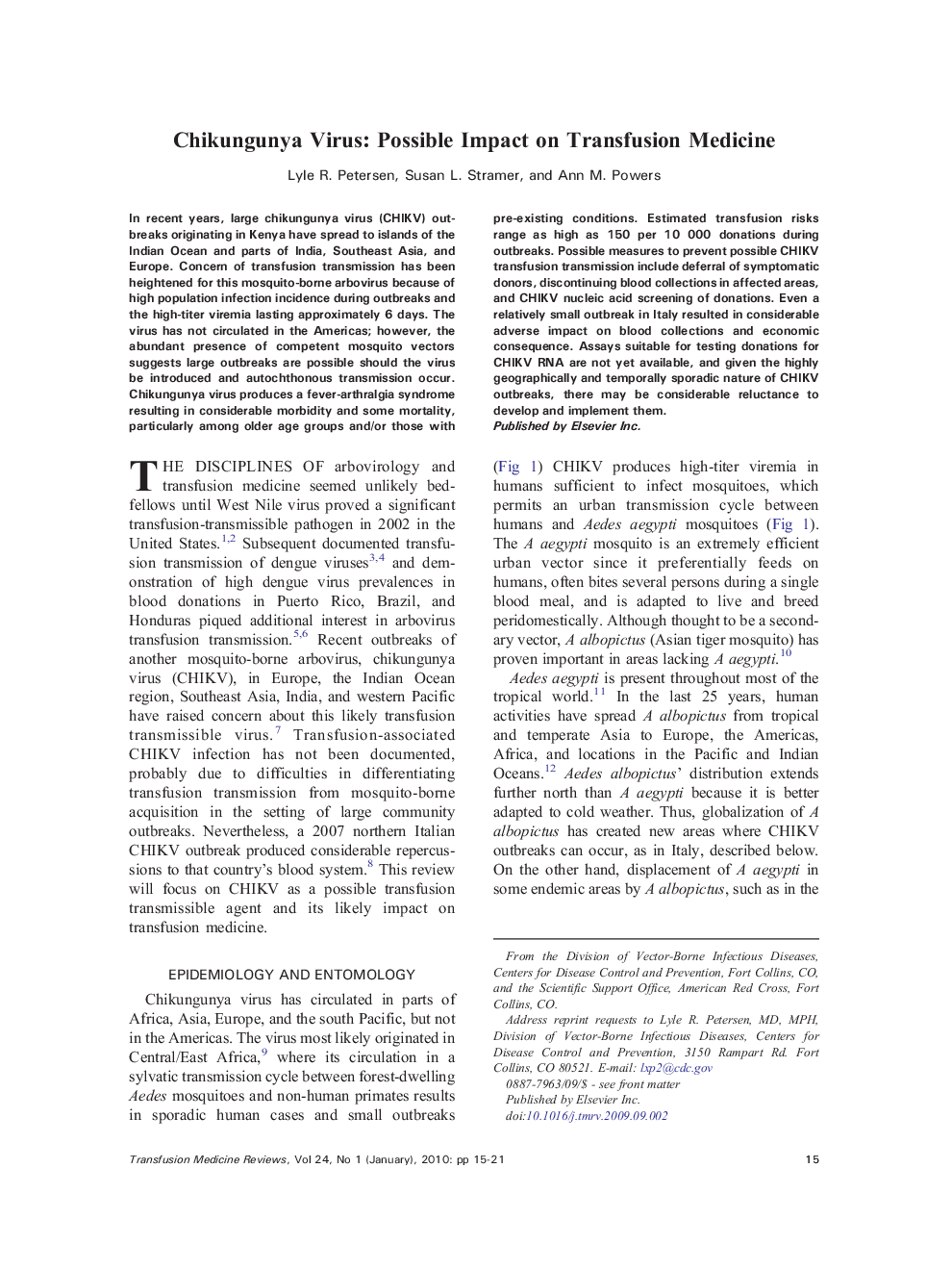| Article ID | Journal | Published Year | Pages | File Type |
|---|---|---|---|---|
| 3336973 | Transfusion Medicine Reviews | 2010 | 7 Pages |
In recent years, large chikungunya virus (CHIKV) outbreaks originating in Kenya have spread to islands of the Indian Ocean and parts of India, Southeast Asia, and Europe. Concern of transfusion transmission has been heightened for this mosquito-borne arbovirus because of high population infection incidence during outbreaks and the high-titer viremia lasting approximately 6 days. The virus has not circulated in the Americas; however, the abundant presence of competent mosquito vectors suggests large outbreaks are possible should the virus be introduced and autochthonous transmission occur. Chikungunya virus produces a fever-arthralgia syndrome resulting in considerable morbidity and some mortality, particularly among older age groups and/or those with pre-existing conditions. Estimated transfusion risks range as high as 150 per 10 000 donations during outbreaks. Possible measures to prevent possible CHIKV transfusion transmission include deferral of symptomatic donors, discontinuing blood collections in affected areas, and CHIKV nucleic acid screening of donations. Even a relatively small outbreak in Italy resulted in considerable adverse impact on blood collections and economic consequence. Assays suitable for testing donations for CHIKV RNA are not yet available, and given the highly geographically and temporally sporadic nature of CHIKV outbreaks, there may be considerable reluctance to develop and implement them.
